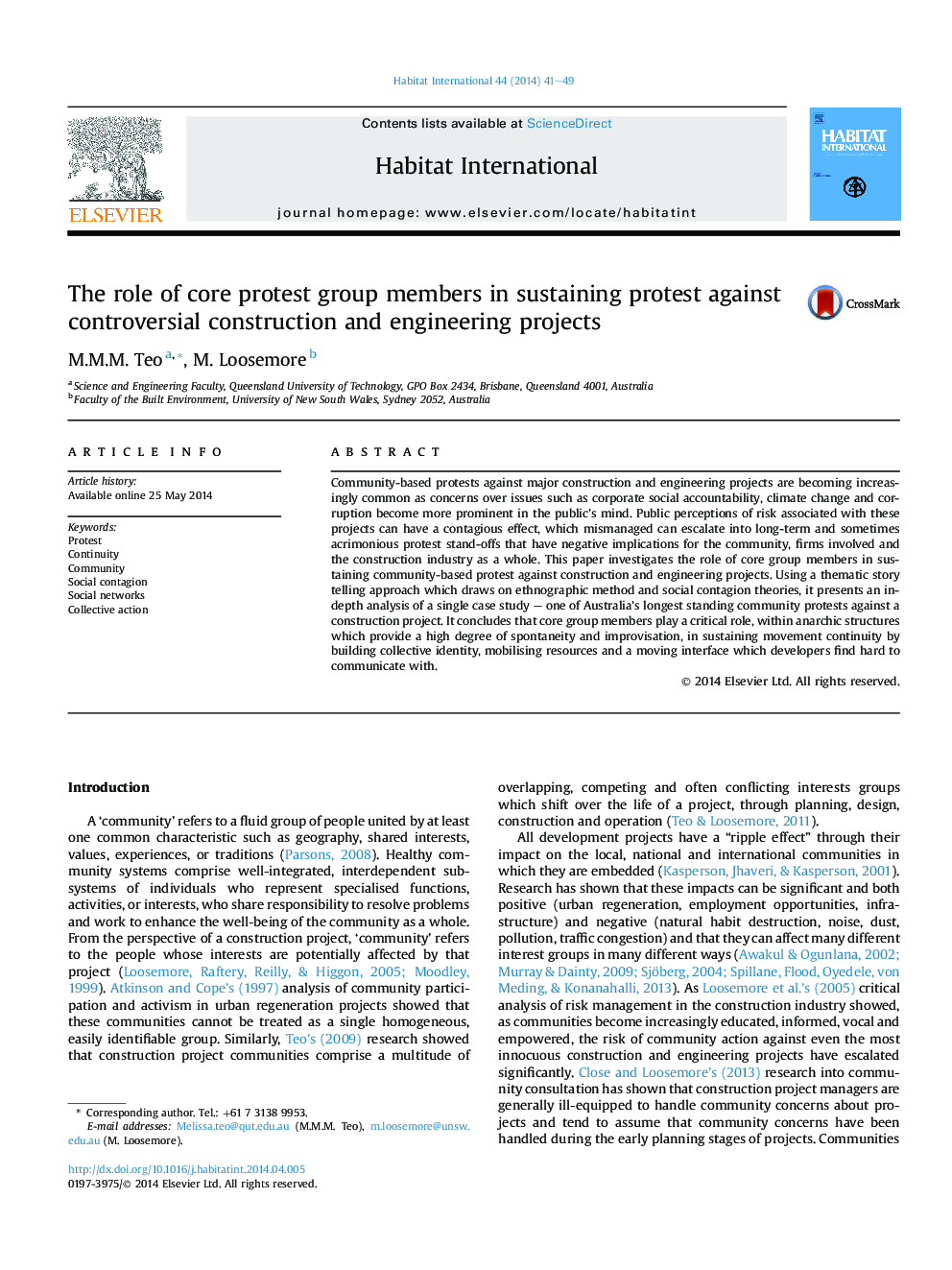| Article ID | Journal | Published Year | Pages | File Type |
|---|---|---|---|---|
| 1047750 | Habitat International | 2014 | 9 Pages |
•Core protest group members are the invisible driving force in promoting movement continuity.•Network layers were detected with core group members playing a crucial connecting role.•A rotating leadership structure helped minimise burnouts and litigious actions by the developer.•Increased perceptions of external threats promote group cohesion and continuity.•Build open and trusting relationships with community leaders to aid project problem solving.
Community-based protests against major construction and engineering projects are becoming increasingly common as concerns over issues such as corporate social accountability, climate change and corruption become more prominent in the public's mind. Public perceptions of risk associated with these projects can have a contagious effect, which mismanaged can escalate into long-term and sometimes acrimonious protest stand-offs that have negative implications for the community, firms involved and the construction industry as a whole. This paper investigates the role of core group members in sustaining community-based protest against construction and engineering projects. Using a thematic story telling approach which draws on ethnographic method and social contagion theories, it presents an in-depth analysis of a single case study – one of Australia's longest standing community protests against a construction project. It concludes that core group members play a critical role, within anarchic structures which provide a high degree of spontaneity and improvisation, in sustaining movement continuity by building collective identity, mobilising resources and a moving interface which developers find hard to communicate with.
